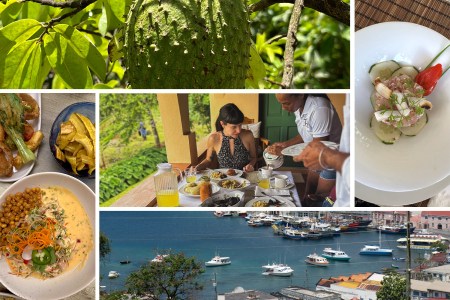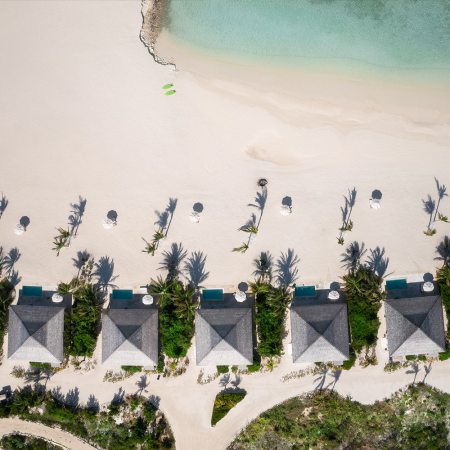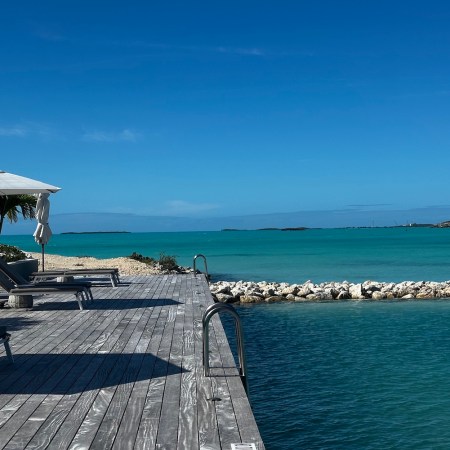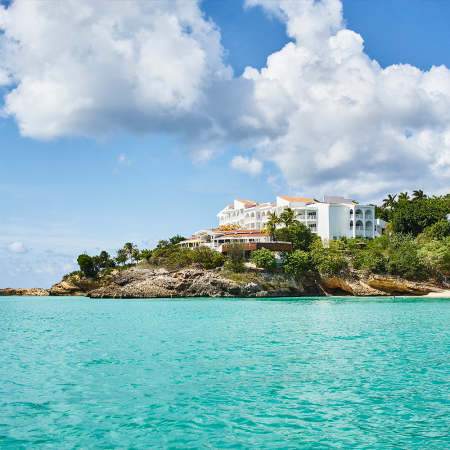We all learned our ABCs long ago, but what about the ABC islands? For most people, those are harder to recite. This trio of islands comprises Aruba, Bonaire and Curaçao and is situated in the Southern Caribbean, just north of Venezuela.
Bonaire is the least trafficked and generally lesser-known of the three. Measuring a little more than 100 square miles, flamingoes outnumber people and there are zero street lights. But an international airport connects Bonaire to the world, and outdoor adventurers flock to its shores to explore its famed dive sites and to relax on its sandy beaches.
The island is part of the Dutch Caribbean and a special municipality of the Netherlands. Most locals speak Dutch, along with English, Spanish and Papiamentu, a Creole-like hybrid of Portuguese and Spanish. It’s easy to communicate on the island, though you may feel self-conscious about your own language skills around all those polyglots.
Bonaire is warm and sunny year round, so it’s a popular getaway for travelers escaping United States and European winters. But because it sits outside the Caribbean’s hurricane belt, there’s never a bad time to visit. And when you arrive, you’ll find friendly locals, lush nature and surprisingly good restaurants. This is what to know before booking your ticket to Bonaire.
How to Get There
Bonaire is served by a handful of direct flights, including from Houston and Newark on United Airlines, Atlanta on Delta, and Miami via American Airlines. (If you happen to be in Amsterdam, there are daily direct flights on KLM.) Otherwise, it’s easy to connect through those major hubs, or you can fly through Aruba or Curaçao.
A few cruise ships also pull up to Bonaire. This lets you explore the island for a half-day, but that will barely scratch the surface of all that’s going on, so it’s better to fly in and stick around for a while.

Where to Stay on Bonaire
Bonaire is mercifully free of high-rises and brand-name chains, so when considering a place to stay, you’re choosing between midsize resorts, boutique hotels, apartments and private rentals. One of the best bets is Delfins Beach Resort, which has 170 spacious rooms spread across the winding, plant-lined property. You’ve got your pick of two pools, including one with a swim-up bar, the largest gym on the island and multiple restaurants. The sandy beach is dotted with loungers and palm trees, and it’s a fine place to kill a few hours with a book and a cold drink.
Harbour Village is another good pick, with airy guest rooms and suites leading out to a private beach, plus a boat-shaped restaurant called La Balandra that sits over the water. And Buddy’s Dive Resort is a popular place for divers, with apartment-style accommodations, a dive center and easy access to the water.
Why Every Food Lover Needs to Visit Grenada
The Caribbean destination is nicknamed the “spice isle” for a reasonWhat to Do on Bonaire
Comfortable hotels and air conditioning are unassailable, but if you’re visiting Bonaire, you’re there to spend time outdoors. The island is a diver’s paradise, with dozens of dive operators and more than 80 dive sites, many located right off the shore. Take a certification course, and you can explore marine sanctuaries to ogle fish and an extensive system of coral reefs. If you’d rather snorkel, that’s even easier. Grab a mask and some fins from one of the many outfitters, and hop in the water. You don’t have to go far to spot coral species along with turtles, rays, tropical fish and seahorses.
Bonaire is also a prime spot for kitesurfing and windsurfing. The former is best practiced at the southwest tip of the island, where trade winds create ideal conditions. For the latter, head to Jibe City, a colorful hangout where you can take windsurfing lessons and rent paddleboards, spending some time on the water before adjourning to the adjacent beach bar for lunch and drinks.
If you prefer your adventuring on land, Bonaire has almost 200 miles of bike trails, spelunking opportunities in a system of 400-plus caves, limestone cliffs perfect for rock climbing and wide-open vistas that look best atop a racing ATV. Whatever you want to do, there are knowledgeable guides to show you the ropes and ensure you don’t get lost.

Where to Eat and Drink
Some of the island’s best restaurants are conveniently attached to hotels, including Brass Boer at Delfins Beach Resort. It’s an outpost of the Michelin-starred original in The Netherlands, and it serves the kind of artfully presented dishes you don’t expect to eat just steps from the beach. Order the six-course tasting menu to skip decision making entirely, or go for an a la carte experience to sample dishes like tuna with lemon yogurt, seaweed, cucumber and sesame, or foie gras torchon with Pedro Ximénez sherry and pineapple compote.
Ingridients at Buddy’s Dive Resort is another option that pairs creative plates and ocean views, serving dishes like wahoo sashimi, tiger prawns with mango salsa, and Hong Kong-style sea bass with egg noodles and stir-fried vegetables. Or check out Ocean Oasis Beach Club, a good-looking spot where you can sip Piña Coladas in cabanas during the day and return to eat fresh fish and grilled steak dinners at night.
When you want a more casual meal, stop into Bagel and Bloom, Between 2 Buns or Number Ten to fuel up on coffee and hearty breakfasts before embarking on an activity-filled day. Then hit Posada Para Mira for a late lunch. This local favorite serves traditional dishes like goat soup, iguana stew and conch with fried plantains.

Get Involved
The main reason Bonaire sports so much pristine nature is that people take care of it. The island is home to fragile habitats and several protected species, so certain swaths of land are preserved for birds, turtles and other non-human residents. Washington Slagbaai National Park was established in 1969 as the Dutch Caribbean’s first nature sanctuary, and today it’s an untouched wilderness that’s home to many animal species and thousands of flamingos. Bonaire National Marine Park was established a decade later to protect wetlands and mangrove swamps and to keep reef sites clean and healthy for divers.
There’s a small nature fee to enter these parks, which helps the island maintain the sites. But you can also pitch in via a handful of ecotourism opportunities. See the Reef Renewal Foundation’s work up-close by joining one of its guided dives or snorkel tours. You’ll learn all about their work to restore Bonaire’s coral reefs by building coral nurseries and promoting natural reproduction of coral species. Or dedicate a few hours to sea turtle conservation by helping to clean up beaches and dive sites or by patrolling the beach to monitor for nest activity.
You can even adopt a donkey. Donkey Sanctuary Bonaire houses more than 800 animals that came under their care because they were sick, injured or orphaned. Visit the sanctuary to hang out with some donkeys and learn more about the organization, or help pay for their care by adopting your favorite. You’ll get an adoption certificate and a picture of your donkey. Aside from being a feel-good souvenir, it’s a fun thing to keep in your wallet to show your friends and relatives as they talk about their kids.
This article was featured in the InsideHook newsletter. Sign up now.
























